I have an application where I want a microcontroller to be able to sample the AC line voltage (scaled down through a voltage divider). The AC power comes into the system, and then an off-the-shelf board-mounted isolating converter is used to generate my DC system voltage. I'm questioning my proposed implementation because it seems that if the DC domain is isolated, it could theoretically be at any potential above or below (within reason) any of the three AC lines.

simulate this circuit – Schematic created using CircuitLab
My analysis says that yes, I do need to connect AC ground and/or neutral to my DC ground. In my actual design I have added clamping diodes near R1 and R2, but I left them out here for simplicity.
Am I correct in that I need to connect the AC Ground or Neutral to the DC ground?